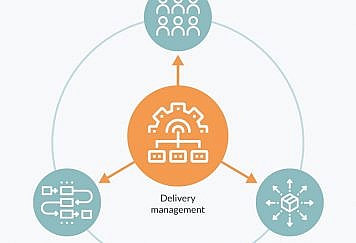The history of fiber optic sensors in medicine is a fascinating journey that has revolutionized medical imaging and diagnostics. Although it doesn’t quite date to the Roman times as first suspected, optical communications do have their origins in the 1700s.
To find out more about the development and evolution of fiber optic sensors in medical imaging, read on. Here, we delve into key milestones and breakthroughs that have shaped the use of fiber optic sensors in medical settings since their formation.
What are Fiber Optics in Medicine?
There are several uses for fiber optics in medicine. One of its main purposes is for use in minimally invasive procedures. They’re most common in endoscopes, which are flexible tubes that have a light and camera attached. Endoscopes are used to see inside areas including the stomach, as well as in biopsies. Fiber optics also helps with imaging and illuminating components within endoscopes.
While endoscopes are the most common use of fiber optics in medicine, it’s also used in biomedical sensors. Sensor optics can measure different bodily functions, from body temperature a patient’s heart rate.
The Early Days of Fiber Optic Technology
The roots of fiber optic sensors in medicine can be traced back to the introduction of fiber optic technology itself. It’s widely regarded that the “optical telegraph” system, made famous in the 1790s by the Chappe brothers, might have been a precursor to fiber optics. However, it was the mid-1800s before the first fiber optic breakthroughs got underway.
In the 1950s and 60s, scientists began experimenting with optical fibers for various applications. This technology initially found its place in telecommunications, where it revolutionized data transmission. However, its potential in the field of medicine soon became evident.
Early experiments involved the use of optical fibers in endoscopy, allowing physicians to remotely view internal body structures with greater precision. Optical fibers offered distinct advantages over traditional endoscopes, such as flexibility and the ability to transmit light without degradation over long distances.
Optical Fiber Sensors (1980s-1990s)
The 1980s marked a significant turning point as optical fiber sensors emerged as a promising tool for measuring various physiological factors. Fiber optic probes were developed to monitor temperature, pressure, and pH levels within the human body. These sensors provided a minimally invasive means of collecting vital data, reducing patient discomfort and risks associated with traditional monitoring techniques.
During this time, researchers refined sensor designs to ensure they could be safely integrated into medical devices. The nature of optical fibers meant that they could be used inside the body without causing harm.
Fiber Optic Imaging Systems (1990s-2000s)
The 1990s saw the integration of fiber optic sensors into medical imaging devices, paving the way for new and innovative diagnostic tech. Fiber optic-based imaging, such as optical coherence tomography (OCT), made their debut during this period.
OCT allowed for high-resolution imaging of biological tissues, revolutionizing ophthalmology and cardiology, among other fields. This technology provided medical professionals with detailed insights into diseases and tissue structure.
The introduction of fiber optic sensors into imaging systems enhanced their resolution and diagnostic potential.
Breakthroughs in Fiber Optic Sensor Technology
Key breakthroughs in fiber optic sensor technology include the development of highly sensitive fiber optic biosensors for detecting biomarkers in real-time. This contributes to the early diagnosis of diseases like cancer and diabetes.
Additionally, researchers are able to use advanced fiber optic sensor technology to monitor blood pressure and oxygen levels.
Fiber optic tech might be associated with telecommunications and internet access at first glance. But it is, in fact, offering medially advanced technology that’s making a difference to people’s lives.
Follow TechStrange for more Technology, Business and Digital Marketing News.





